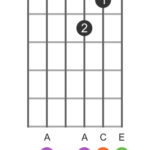Electronic instruments, particularly guitars, possess an incredible capacity for sonic exploration, largely thanks to the innovative world of effects pedals. Among these essential tools for crafting unique and captivating tones, delay and reverb pedals stand out as fundamental components of any guitarist’s pedalboard. While delay pedals offer rhythmic repetition and layered textures, reverb pedals introduce an entirely different dimension – spatial depth and sonic atmosphere. This article dives deep into the world of Reverb Guitar Pedals, exploring their unique characteristics and how they can elevate your guitar playing.
Reverb pedals operate by simulating the natural reflections of sound in a physical space. Imagine the subtle echoes you hear in a small room versus the vast, lingering resonance within a cathedral. Reverb pedals capture these sonic environments, adding a sense of space and depth to your guitar signal. Unlike delay, which repeats the original sound discretely, reverb creates a wash of sound that blends seamlessly with your playing, adding sustain, texture, and character. This effect evokes a feeling of playing in a specific acoustic environment, whether it’s a tight studio room, a spacious concert hall, or even a spring-loaded amplifier.
The impact of a reverb pedal on your guitar tone is transformative. It can inject life into dry, sterile signals, creating a richer, more engaging sound. Think of the iconic surf rock sound of the 1960s, exemplified by Dick Dale’s legendary rendition of “Misirlou.” This genre heavily relies on the splashy, vibrant reverb to create its signature energetic and spacious feel. However, the applications of reverb extend far beyond vintage styles. Modern guitarists across genres utilize reverb to add subtle ambience, create ethereal soundscapes, or even generate dramatic, otherworldly textures.
Choosing the right reverb pedal involves considering the different types of reverb effects available. Common reverb types include:
- Spring Reverb: Emulating the sound of physical springs vibrating, spring reverb is known for its characteristic “drip” and metallic texture, often found in classic guitar amplifiers. It’s ideal for vintage tones and adding a raw, energetic edge.
- Plate Reverb: Simulating the sound of sound waves vibrating a large metal plate, plate reverb offers a smooth, dense, and lush sound. It’s often favored for vocals and instruments where a refined and polished reverb is desired.
- Hall Reverb: Recreating the expansive and lingering reflections of a large concert hall, hall reverb provides a vast and immersive sense of space. It’s perfect for creating ambient soundscapes and adding dramatic depth.
- Room Reverb: Simulating the natural reflections of a smaller room, room reverb offers a subtle and natural-sounding ambience. It’s often used to add a touch of realism and warmth without overwhelming the original signal.
Experimenting with a reverb pedal can significantly expand your sonic palette. You can use it subtly to add warmth and dimension to clean tones, creating a more polished and professional sound. For lead guitar, reverb can enhance sustain and create a more expressive and emotive feel. When combined with overdrive or distortion, reverb can add thickness and atmosphere, making your riffs and solos sound larger than life. It’s also a crucial ingredient in ambient and atmospheric styles, allowing guitarists to craft vast, evolving soundscapes.
While both delay and reverb pedals add depth and interest to your guitar sound, they serve distinct purposes. Delay creates rhythmic repetitions, useful for creating echoes, layered melodies, and rhythmic textures. Reverb, on the other hand, simulates acoustic space, adding ambience, sustain, and a sense of environment. Often, combining delay and reverb pedals can yield incredibly rich and complex textures, allowing you to craft truly unique and captivating guitar tones.
In conclusion, the reverb guitar pedal is an indispensable tool for any guitarist seeking to enhance their sound with depth, space, and character. From subtle ambience to dramatic washes of sound, reverb opens up a world of sonic possibilities, allowing you to shape your guitar tone and express your musical ideas with greater dimension and impact. Explore the diverse world of reverb pedals and discover how this essential effect can transform your playing and unleash the full potential of your guitar.

